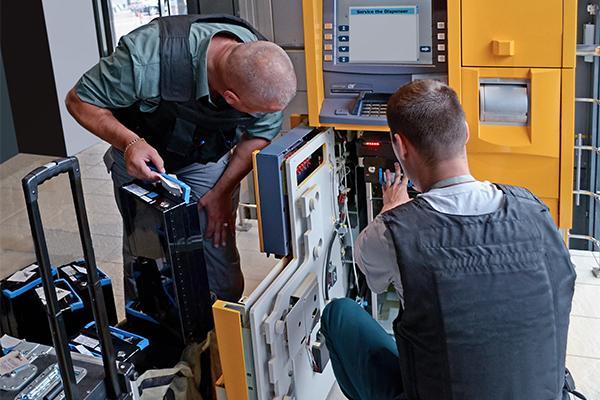How Electronic Access Security Can Stop Criminals From Hitting the Jackpot

In today’s digital age ATM crimes are becoming more sophisticated, with the growing threat of ‘jackpotting’, a critical concern for the ATM industry. With ATM security an on-going challenge for the industry, the ways in which criminals are accessing money and data are becoming increasingly more sophisticated following the development of new and progressive technology. While card trapping, cash trapping, skimming and brute force may be the most common forms of ATM theft, the rise of malware crime, such as ‘jackpotting’, is a real concern to the industry, not only because of the associated costs, but also because of the wider implications on brand reputation and customer trust.
The crime involves a physical attack on the ATM top box to access the ATM computer located inside. Once inside the top box malware is installed on the computer via a number of potential methods, including CDs, USB-based devices and smartphones, which then prompt the ATM to trigger an unauthorized pay out. With the corrupt code installed, criminals are able to send a series of commands to the ATM to dispense cash without needing to use valid cards or PINs, giving way to a cash windfall. The physical security of the ATM computer is therefore more critical than ever before in the fight against ATM crime.
Industry challenges
In 2015, there were over 18,000 ATM fraud attacks in Europe, reporting losses of over €300m and an additional €49m on physical attacks. With the ATM often remaining the main link between bank and customer, a customer’s trust in the safety and security of the ATM is paramount to the industry’s success.
Historically, various mechanical locking devices have been used on the most pivotal access points of an ATM, as well as helping to secure key internal mechanisms. However, as ATM criminals become more innovative, so too should the ATM’s locking and latching capability. To safeguard against today’s attacks, and potentially more advanced threats in the future, the industry is acknowledging that these sophisticated crimes need to be approached with more sophisticated solutions.
Innovations in ATM top box security
Options being considered to strengthen top box security for example, include electronic access solutions with added intelligence. Already being used within other highly secure environments, such as financial data centres, electronic access solutions are the logical next step for further enhancing an ATM’s security. Not only can they assume complete control of the ATM top box, allowing access only to authorized personnel, they can also provide an audit trail to record and monitor when and for how long the machine has been opened. As a result, the need for physical key management is eliminated, making unauthorized access to ATMs significantly harder.
Southco has worked with the world’s biggest ATM manufacturers for more than 20 years, providing the industry with a variety of both standard and customized mechanical locks and latches.
As a trusted industry supplier and a member of the ATM Industry Association (ATMIA), Southco’s recommendations on future proofing the ATM top box are recognized as the next step in security innovation, the objective being to support ATM manufacturers wanting to make the shift from mechanical to electronic locking and therefore improving security in the banking industry.
Southco R4-EM Electronic Rotary Latch
Southco's R4-EM Electronic Rotary Latch series has been designed to integrate into the ATM’s software. When linked to a central command it has the ability to provide complete control over access to the top box, granting access to only authorized personnel. The latch combines durable, mechanical performance with added electronic intelligence.
Southco’s Electronic Access Products are compatible with a range of access control devices such as numeric keypads, smartcard readers, Bluetooth, NFC and biometric devices. Added intelligence also provides remote monitoring, remote actuation and audit trail capabilities. Such products give way to a more logical, layered approach to ATM security which is fast becoming industry best practice. While the challenge of ATM security will never go away, products like these can help future-proof the industry against more sophisticated attacks, saving the industry millions of pounds and restoring customer trust in the process.



